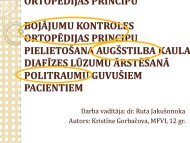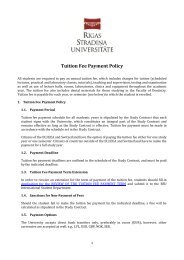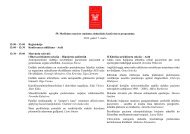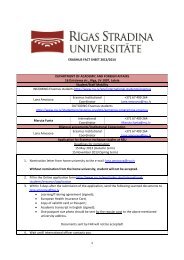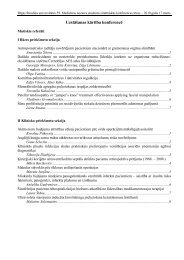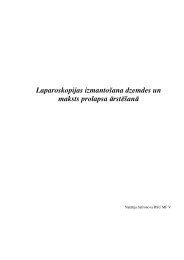History of Latvia: a Brief Survey
History of Latvia: a Brief Survey
History of Latvia: a Brief Survey
- No tags were found...
You also want an ePaper? Increase the reach of your titles
YUMPU automatically turns print PDFs into web optimized ePapers that Google loves.
Rīga in 1612.However, during this time, the Duchy <strong>of</strong> Courland remained an object <strong>of</strong> interest for bothSweden and Poland. In 1621, during the Polish-Swedish war (1600-1629), Latgale remainedunder Polish control, but Vidzeme and Rīga came under Swedish rule, overshadowingStockholm as the largest and most developed city in the Swedish kingdom. Rīga waseconomically and culturally part <strong>of</strong> a growing urban network linking the major states andcultures <strong>of</strong> Western, Eastern and Northern Europe. During this period the region <strong>of</strong> Vidzemewas known as the ‘Swedish bread basket’ because it supplied the larger part <strong>of</strong> the Swedishkingdom with wheat.Awareness <strong>of</strong> the <strong>Latvia</strong>n identity began in the 17th century. The Couronians, Latgallians,Selonians, Semigallians and part <strong>of</strong> the Livs began to identify as a culturally unified nation —the <strong>Latvia</strong>ns (latvieši). Most <strong>of</strong> the <strong>Latvia</strong>n population were farmers and by the second half <strong>of</strong>the 17th century, most <strong>of</strong> them were serfs.In the early 18th century, the Great Northern War broke out, largely as a result <strong>of</strong> the RussianEmpire’s desire to expand its territorial claims to the strategically important territory <strong>of</strong> <strong>Latvia</strong>.One <strong>of</strong> its key goals was to secure and control the wealthy and prestigious city <strong>of</strong> Rīga.14



